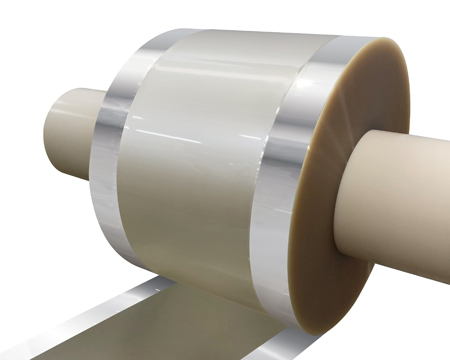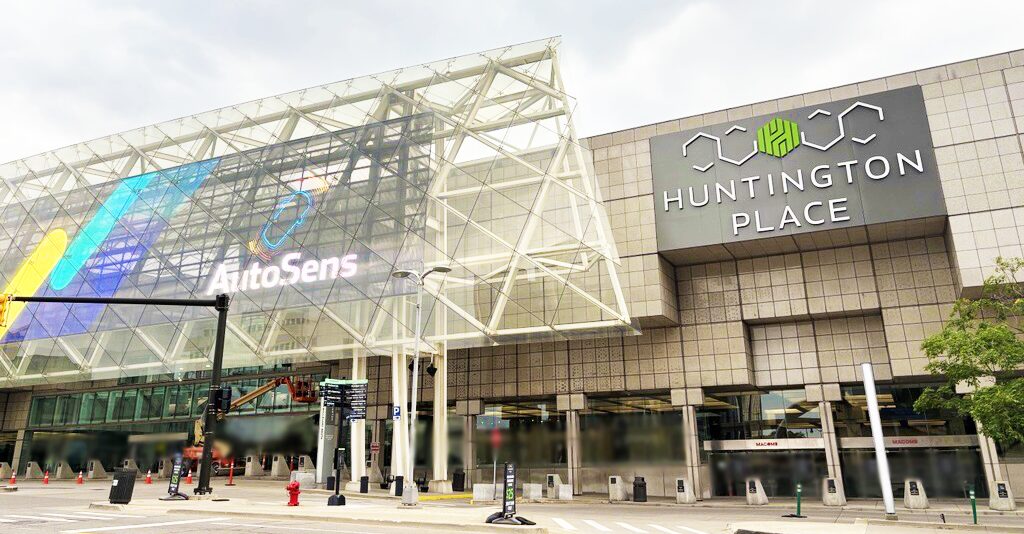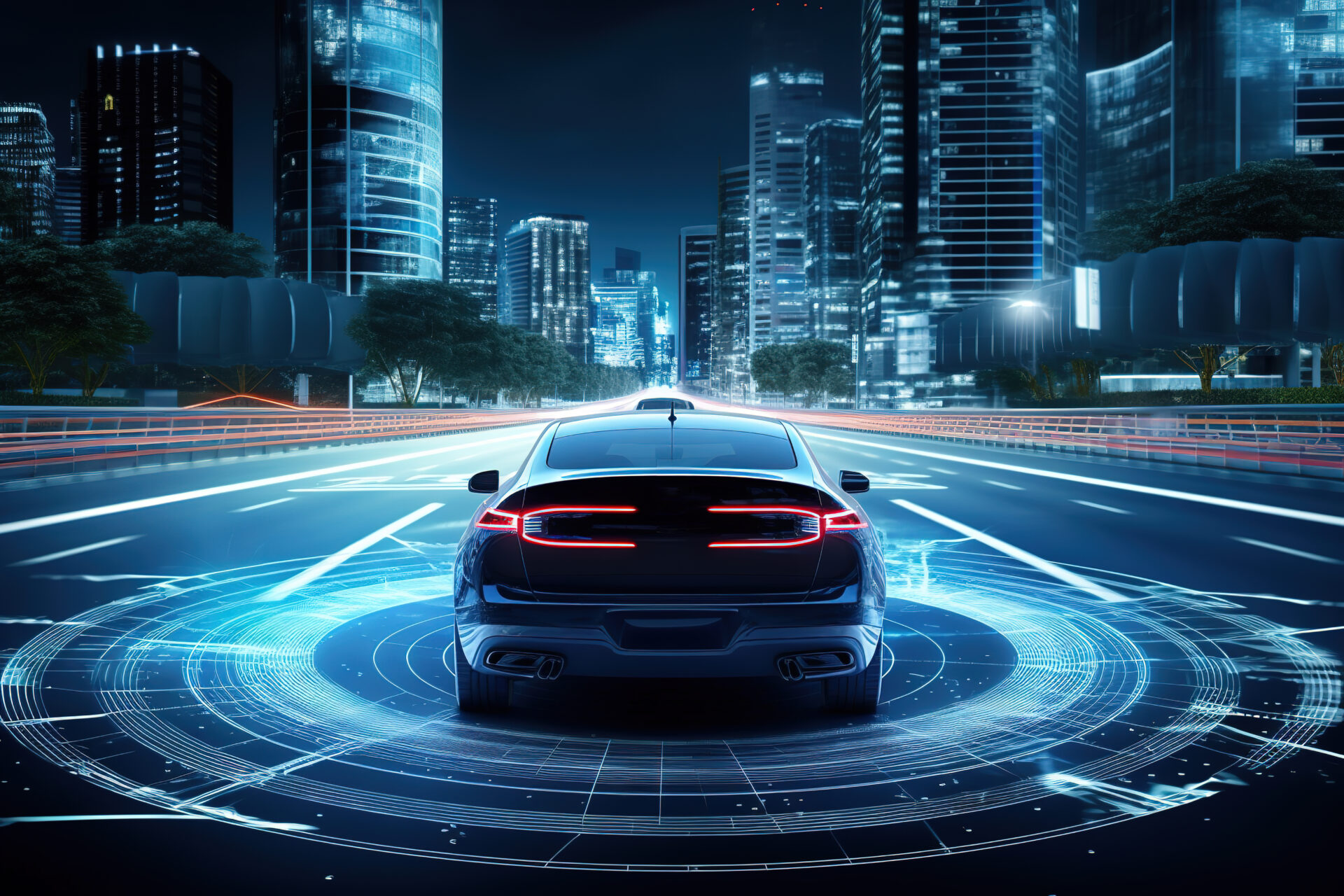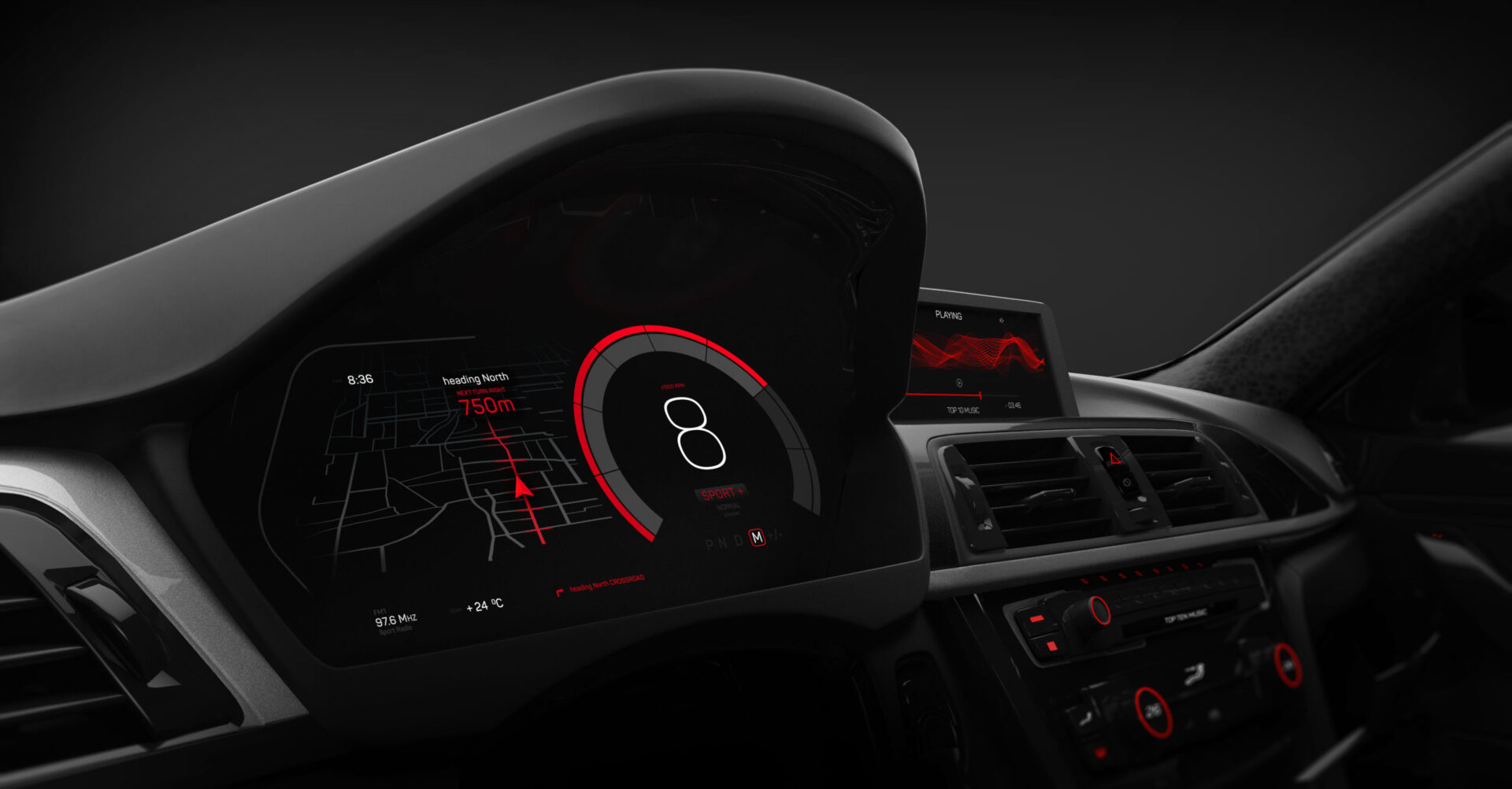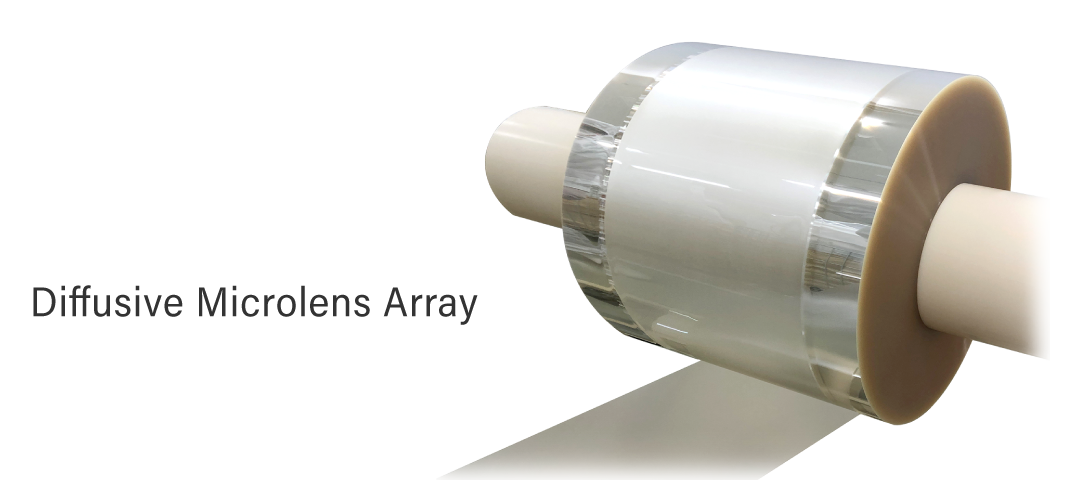
- Optical Products
Improving HUDs image quality with top-hat light distribution
Contents hide
The growing popularity of head-up displays
In recent years, Heads-Up Displays (HUDs) have been installed in high-end luxury cars. Dexerials developed the Diffusive MicroLens Array (DMLA) to enhance the driving experience, which is used in HUDs to improve their image quality.
What is the main function of the diffusive microlens array?
A HUD projects images onto a windshield to provide information to the driver of a vehicle. A Diffusive MicroLens Array (DMLA) is an optical component used inside a HUD. It enhances the brightness and reduces the optical defects of the image projected onto the windshield.
Why are many European automotive manufacturers adopting HUDs?
In Europe, only Germany does not have a general speed limit on highways. It is very dangerous for a driver to look at the navigation system even for a moment while driving at 170-180 km/h at high speed. However, the driver can keep his eyes on the road and get the necessary information from the image projected on the windshield by using a HUD.
More and more automotive OEMs are adopting HUDs because of this advantage.
The top-hat light distribution improves brightness by approximately 40% and reduces optical non-uniformity
HUDs contribute to driver safety, but there are still many issues to be addressed, such as angle of view and image quality. Dexerials’ DMLA is the solution to such problems.
How are DMLAs used in HUDs?
Automotive HUDs use the same principle as conference room projectors. The light emitted from the LED light source is efficiently spread by a diffuser (diffusion film) illuminating the liquid crystal display (LCD) and which then projecting the image onto the windshield via a mirror inside the HUD. The projected image must be bright enough to be visible at all times of the day while consuming little power. In addition, current HUDs have smaller screens and can only display a limited amount of information compared to navigation displays. Dexerials’ DMLA is recommended to address such visibility issues.
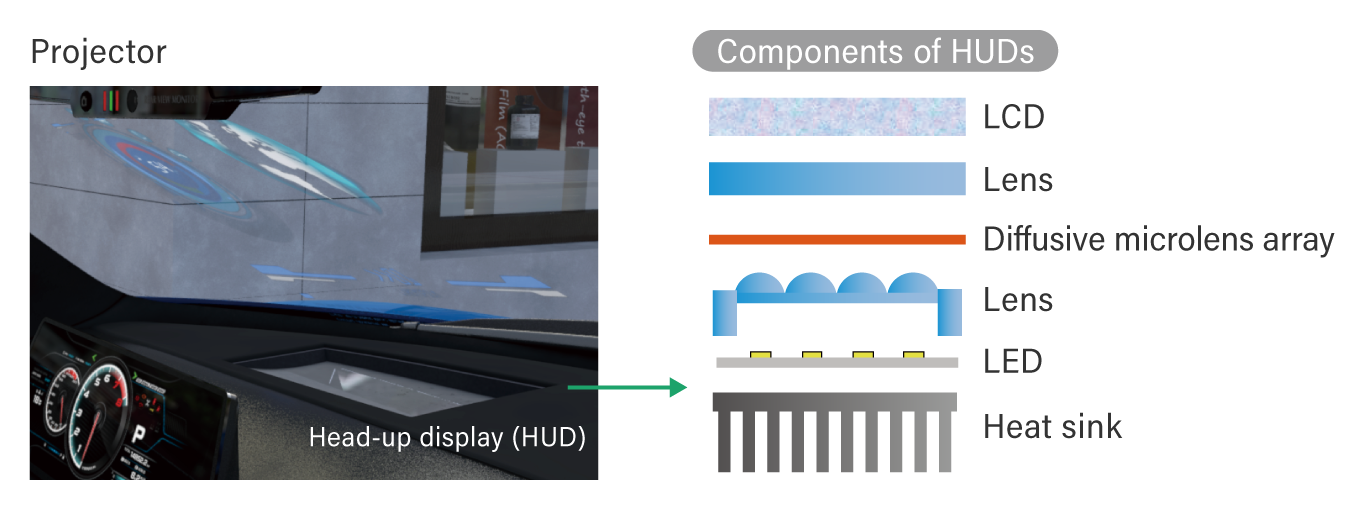
What principles do DMLAs use to solve these challenges?
The following figure shows a cross-sectional structure and image of Dexerials’ DMLA. Conventional diffusers have a flat surface, but the surface of Dexerials’ DMLA is designed to have convex and concave shapes with no gaps between them. This makes the brightness of the diffused light uniform across the entire screen, reducing uneven brightness and achieving efficient diffusion.
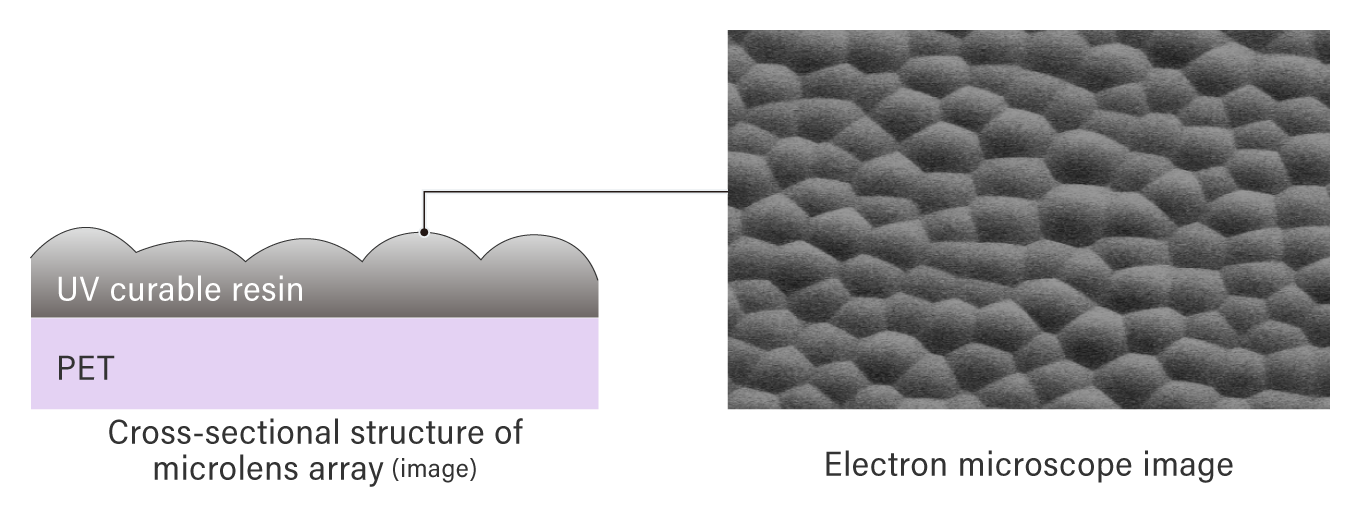
The following graph shows how Dexerials’ DMLA affects light distribution. The unique light distribution structure of DMLA is called “top-hat light distribution”.
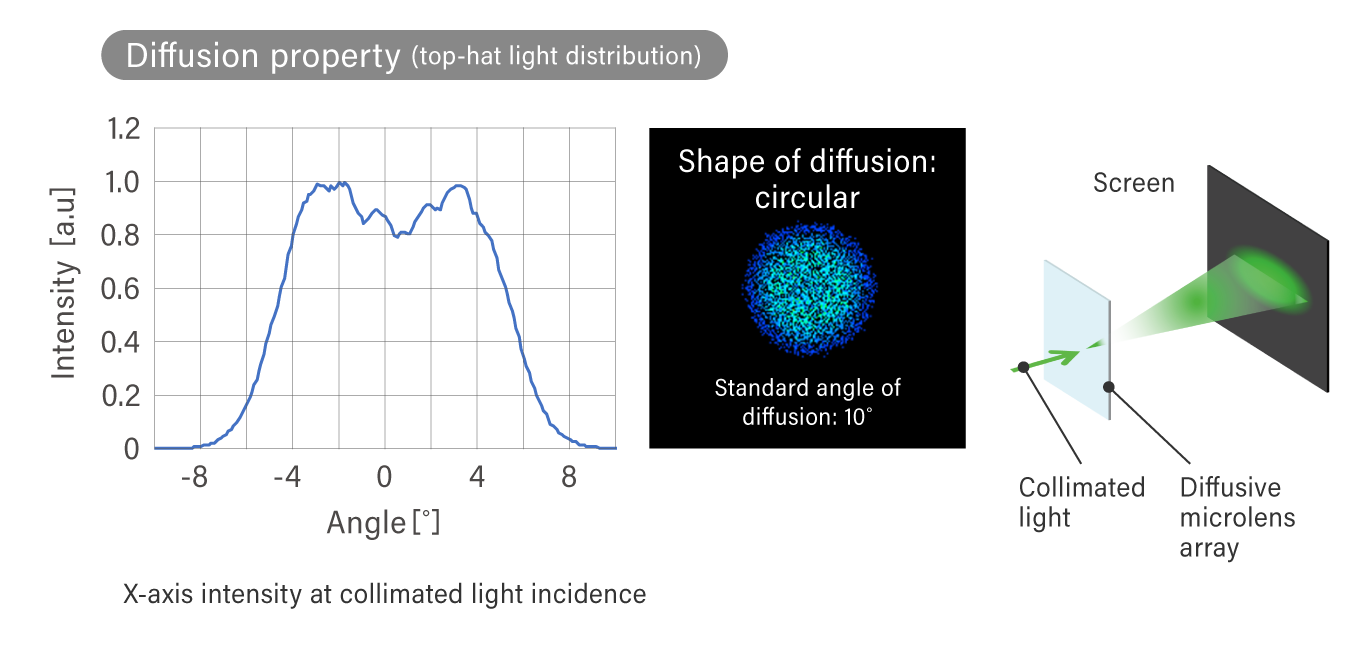
This top-hat light distribution allows HUDs projecting a larger angle of view with higher quality image than conventional products (see figure below). Dexerials’ technology also allows adjusting the shape of the diffused light. By shifting the diffusion angle in the X and Y directions, it is possible to distribute light elliptically.
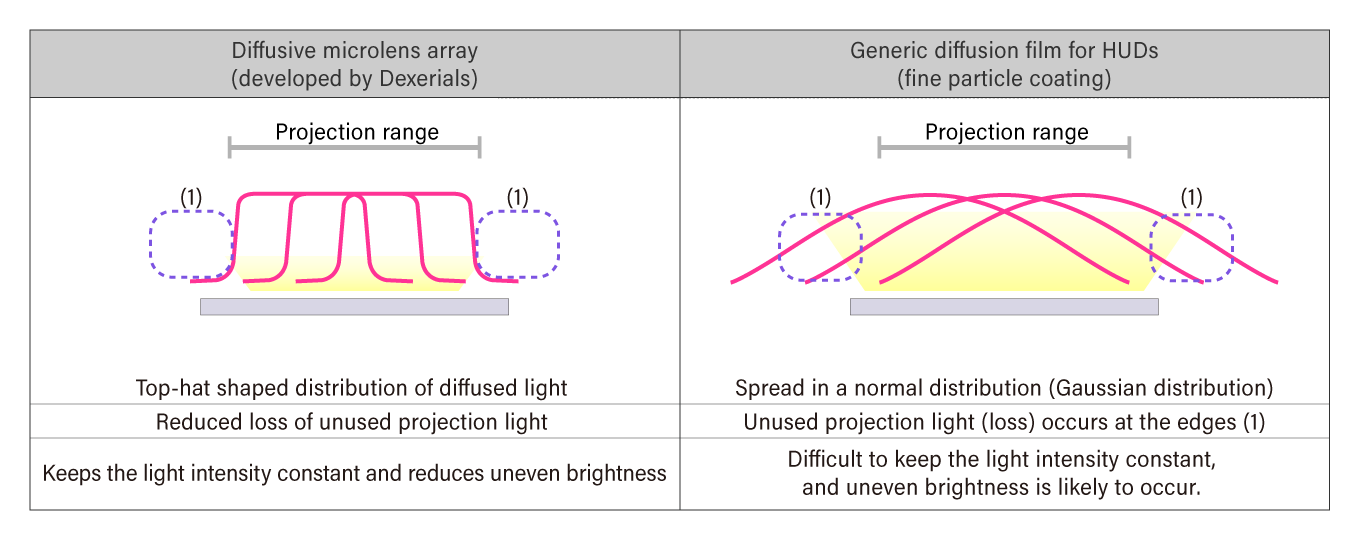
Future cars technologies
Dexerials is expanding its applications to the automotive market and not just the consumer electronics market.
What does Dexerials envision for the future of HUDs beyond DMLA technology?
It was around 2015 when Dexerials began to focus on the automotive industry. Until then, Dexerials’ components were developed for consumer electronic devices such as, cell phones and PCs. Compared to the consumer electronics market, products for automotive applications take much longer time to develop and test.
There is no doubt that the size of in-vehicle displays will increase. Also, as autonomous driving technology advances, augmented reality (AR) will become more relevant. For example, cars will have sensors that detect the position and speed of the car in front and project the optimal path on the windshield in real time. There are automotive OEMs considering various options such as implementing 3D stereoscopic images.
Light control and image projection technologies will continue to evolve. For example, cameras and displays will replace mirrors, advertisements will be displayed on rear windshields, and illuminated lights will be used to automatically avoid pedestrians and oncoming traffic. Dexerials will continue to contribute to the technological advancement of future automobiles by leveraging its expertise in the consumer electronics market.
Related articles
- SHARE

We provide materials regarding our products and manufacturing technologies.
Feel free to download it for free.
Download Materials
We provide materials regarding our products and manufacturing technologies.
Feel free to download it for free.
Download Materials




